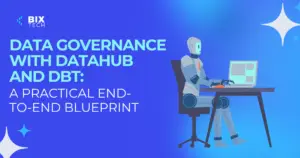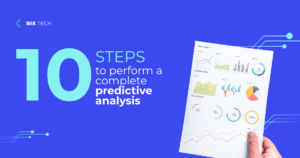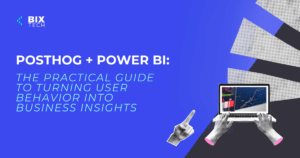Open Source Software in 2025: Trends, Benefits, and What to Expect Next

Sales Development Representative and excited about connecting people
Open-source software has come a long way since its inception in the early 1980s, when Richard Stallman, a visionary developer at MIT, introduced the idea of freely accessible and modifiable code. His creation of the GNU Public License sparked a revolution, transforming open-source from a niche concept into a global movement powering everything from Linux and Mozilla Firefox to Python and WordPress. As we look ahead to 2025, open-source software is not just surviving — it’s thriving, evolving into a fundamental force that shapes modern business, technology, and innovation.
In this article, we’ll explore the key trends driving open-source software in 2025, the benefits that make it so appealing, and practical insights for organizations and developers looking to leverage its potential.
What Exactly Is Open-Source Software?
At its core, open-source software is built on the principle of collaboration. The source code is made publicly available, allowing anyone to view, modify, and enhance the software. This stands in stark contrast to proprietary solutions, where only the owning company can make changes.
Open-source projects are often:
- Community-driven: Developers worldwide contribute, review, and improve the codebase.
- Accessible: Most open-source tools are free or come with minimal cost.
- Flexible: Users can tailor the software to meet their unique needs.
However, open-source isn’t a free-for-all. Most projects require users to follow licensing rules that ensure responsible use and fair contribution.
Actionable Takeaway:
If you’re new to open-source, start by exploring beginner-friendly projects or joining forums and communities dedicated to your technology stack of interest. This is a great way to learn, contribute, and build your professional network.
The Powerful Benefits of Open-Source Software
Open-source’s popularity isn’t just about the “free” price tag. It delivers a range of advantages for businesses, developers, and the broader technology ecosystem.
1. Cost-Effectiveness
- Lower upfront and ongoing costs: Most open-source solutions are free to use, with optional paid support or premium features.
- Budget-friendly scaling: Open-source is ideal for startups and enterprises alike, enabling organizations to allocate resources more strategically.
Example:
Many small businesses use LibreOffice instead of Microsoft Office, saving on licensing fees while maintaining productivity.
Actionable Takeaway:
Conduct a software audit to identify proprietary tools you could replace with open-source alternatives, potentially reducing your IT expenses.
2. Vibrant Community Support
- Global collaboration: Developers, testers, and users form active communities around open-source projects.
- Peer learning: Community forums and documentation provide invaluable support for troubleshooting and skill development.
Case Study:
The Python community is renowned for its collaborative spirit, offering rich documentation and peer support that accelerates both learning and innovation. For more on how data-driven communities can revolutionize businesses, explore this guide on data science in business.
Actionable Takeaway:
Engage with open-source communities by asking questions, sharing feedback, or contributing code. This can lead to faster problem-solving and career growth.
3. Enhanced Security and Stability
- Rapid bug detection: With many eyes on the code, vulnerabilities are found and patched quickly.
- Frequent updates: Active communities ensure that open-source projects remain up-to-date and resilient.
Example:
Linux, the backbone of countless servers and devices, benefits from continuous community scrutiny, making it one of the most secure and stable operating systems.
Actionable Takeaway:
Stay updated with the latest security patches for any open-source software you deploy. Consider joining mailing lists or following project updates on GitHub.
4. Flexibility and Customization
- Tailored solutions: Developers can modify code to fit specific organizational needs.
- Integration capabilities: Open-source tools often integrate seamlessly with other systems and platforms.
Case Study:
A logistics company customized an open-source ERP system to streamline its unique workflows, saving both time and money compared to using a rigid, off-the-shelf product.
Actionable Takeaway:
When choosing software, consider open-source options that offer customization. This flexibility can future-proof your tech stack against changing business needs.
5. A Playground for Learning
- Skill development: Open-source projects are open to contributors at all experience levels, making them perfect for learning and experimentation.
- Mentorship: New developers get feedback from seasoned professionals, accelerating their growth.
Example:
Aspiring data scientists often hone their skills by contributing to open-source machine learning libraries, building real-world experience that sets them apart in the job market.
Actionable Takeaway:
If you’re looking to upskill, contribute to a project aligned with your interests. Even small bug fixes or documentation improvements count!
Open Source Software Trends to Watch in 2025
Open-source is rapidly evolving, with several key trends set to shape the landscape in 2025.
1. Accelerating Market Growth
The open-source software market is booming. According to recent projections, the open-source services sector is expected to soar from $21.7 billion in 2021 to over $50 billion by 2026 — a 130% growth rate. This surge is fueled by businesses leveraging open-source to scale operations, innovate faster, and reduce costs.
Actionable Takeaway:
Keep an eye on emerging open-source solutions in your industry. Early adoption can give your organization a competitive edge.
2. High Demand for Specialized Talent
As open-source adoption rises, so does the need for skilled professionals. The latest Open Source Jobs Report reveals that half of tech managers plan to increase hiring in this space. However, there’s a growing emphasis on certifications and specialized expertise, with 88% of surveyed managers prioritizing certified open-source professionals.
Practical Example:
Companies are investing in training programs and internal open-source initiatives to attract and retain top talent.
Actionable Takeaway:
If you’re a tech professional, consider pursuing open-source certifications or contributing to popular projects to boost your credentials.
3. A Shift Toward Open-Source Alternatives
With robust, free alternatives available, more users are moving away from proprietary software in favor of open-source tools that offer comparable features.
Popular Open-Source Substitutes:
- Audacity (vs. Apple Logic Pro)
- GIMP (vs. Adobe Photoshop)
- Inkscape (vs. Illustrator)
- Jami (vs. WhatsApp)
- LibreOffice (vs. Microsoft Office)
- Nextcloud (vs. Google Drive)
- Nixnote (vs. Evernote)
- VLC (vs. Windows Media Player)
Actionable Takeaway:
Evaluate your software stack and pilot open-source alternatives where feasible. This can increase agility and reduce vendor lock-in.
4. Renewed Focus on Security
Security remains a top priority. As open-source software becomes more deeply embedded in critical systems, developers and communities are doubling down on proactive security measures—identifying vulnerabilities, patching threats, and fostering a culture of shared responsibility.
Example:
Open-source security tools like OSSEC and Snort are themselves leading examples, with communities rapidly responding to new threats.
Actionable Takeaway:
Implement regular security reviews and utilize open-source monitoring tools to safeguard your applications.
5. Commitment to Diversity, Equity, and Inclusion (DEI)
Open source is rooted in accessibility, but recent research shows there’s progress to be made in diversity and inclusion. Efforts are underway to make open-source communities more welcoming and equitable, especially for underrepresented groups.
Case Study:
The Linux Foundation’s DEI initiatives are working to close gaps by supporting inclusive events, scholarships, and mentorship programs.
Actionable Takeaway:
Promote diversity in your open-source contributions by supporting inclusive projects and advocating for equitable participation in your organization.
Embracing the Future: Why Open-Source Matters More Than Ever
Open-source software is reshaping the digital landscape, driving innovation, and fostering collaboration on a global scale. As we move through 2025 and beyond, expect open-source to solve even more complex challenges, break down barriers, and empower individuals and organizations alike.
Want to dive deeper?
Explore how AI and open-source are revolutionizing business or discover the latest in data-driven decision-making to see how these trends can directly impact your organization’s growth.
Final Actionable Takeaway:
Start small—experiment with a single open-source tool or contribute to a project that aligns with your expertise. The open-source world is vast and welcoming, offering endless opportunities for growth, innovation, and community.
Stay curious, stay collaborative, and let open-source power your journey into 2025 and beyond.









